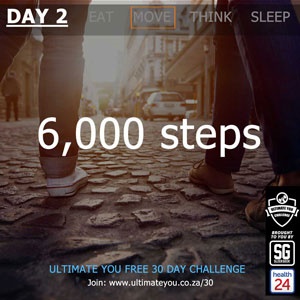
Sedentary behaviour and physical inactivity is one of the top factors (along with smoking, high alcohol consumption, and obesity) that strongly reduces life expectancy and health-related quality of life.
Just sitting for more than 6 hours a day already statistically increases your risk for heart disease by more than 50%. You are also decreasing your span of quality life by roughly 7 years, and of course your risk for various types of cancers, among other things, has sky -rocketed.
Even if you go to the gym for 1 hour a day X 7 days a week… If you sit on your bum behind a computer, in the car, at a table, on the couch, or in your bed for the remaining 23 hours of your day then you are STILL sedentary.
Stay connected with SleekGeek on Facebook
Unsurprisingly, something as simple as examining the number of steps that people take throughout the day using a pedometer or activity tracker like the Jawbone can provide a clear distinction between sedentary behaviour, active behaviour, and the associated risks or benefits of each.
But do not worry, you do not need a fancy device to complete today’s task. We have a list of options and everyone can use at least one of the strategies to track their steps.
According to Mark Sisson, author of the Primal Blueprint, some of the reasons you should be walking more include:
- It helps reduce body fat.
- It improves glycemic control (better blood glucose control and more stable insulin levels after eating sugary or carbohydrate-rich meals).
- It improves triglyceride levels and lowers blood pressure.
- It’s good for your brain, (cognition, memory, academic performance, creativity, and logic tests.
- It reduces stress.
- It boosts immune function.
- It prevents falls in the elderly.
- It gives you a chance to think.
- It can be a kind of meditation.
- It keeps your buttocks engaged with the world, because excessive sitting causes glute inactivation and atrophy which brings about back pain, instability, and reduces strength.
- It’s well tolerated by people with arthritis and many other health conditions who might not otherwise be able to exercise. Remember a little bit of something is still better than nothing.
- So how about we bump sitting less and moving more a little higher up our priority lists?
How to track your steps?
There are options that range from basic to advanced but ANYONE can track their movement. There is no excuse. You can:
1. Use time as a measure if you have technology challenges. This will vary from person to person depending on pace and stride but we think 6,000 steps equates to an hour of walking in a day. So that can be getting up for 6 10 min walks, 3 20 min walks or one walk at the end of the day. Up to you.
2. If you have a smartphone many have a pedometer or step tracker built in. The iphone has a “Health” application for example.
3. You can download a free step tracker in the Apple and Android stores (here are a few popular ones - S-Health on the Samsung Play Store, Google Fit on Android, Pacer Pedometer App available on Itunes Store, Runtastic Pedometer, Jawbone UP, Runkeeper, The Health App already installed on the iPhone.
4. You can use a tracking device such as a Jawbone UP or Fitbit. There are many other brands and price bands ranging from a few hundred rands to R1,500.
5. Most fancy sport watches can also track steps
Bonus: We organised a deal with our friends at Quantifi who retail a wide variety of trackers and negotiated you a 10% discount of any item on their store. Find out how to claim your discount over here.
BONUS
Today we are asking you to move 6,000 steps.
If you are already advanced add a bonus 2,000 or 4,000 steps. That is up to you.
How much should you walk?
Preliminary pedometer indices for public health have established that:
- Those who take 5,000 steps a day or less are considered sedentary and at a higher risk for obesity, disease, and early death.
- Those who take 10,000 steps a day or more are considered active and typically have less body fat and better overall health.
For some people, these numbers are ridiculously easy, and for others they might seem utterly impossible.
That is why we have set a realistic start that you are free to scale to your level.
Being mindful of your steps is supposed to get you up and moving, beyond what you normally do in your daily life. You should be actively looking for ways to add in more movement and walking throughout your day such as going for walks at lunch, taking the stairs, parking in the back of the parking lot, walking the dog instead of watching TV, and so on.
If you are keen on moving more and wish to take it further join the Sleekgeek 30 day Step Challenge.
DONE!
See you tomorrow for your next Healthy Habit.
JOIN UP
You can sign up for FREE here: Ultimate You
In case you missed these:




 Publications
Publications
 Partners
Partners










